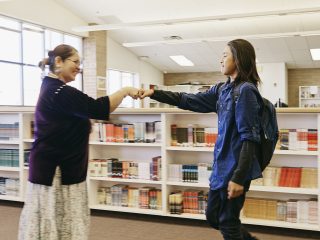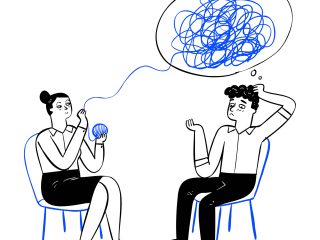HWC Blog
HWC Blog
Question: Does training staff in both de-escalation and physical intervention, as opposed to de-escalation alone, lead to an increase restraints (after staff are trained) within an organization?
Answer:
The idea that training staff in physical intervention will lead them to use it excessively stems from a misunderstanding of human nature and the role of empowerment.
This is really a discussion about whether the personal empowerment of staff is good or bad. In the same way that empowering students with tools for self-regulation, resilience, and positive coping skills enables them to handle difficult situations without resorting to aggression or defiance, training staff in physical intervention is not about promoting its use but about giving them confidence and preparedness to maintain safety when a truly unsafe situation arises.
Safety Comes First
It is only by creating a physically and emotionally safe environment that organizations and schools can offer their clients and students a foundation from which they can learn, heal or grow.
Without the tools to ensure safety, teachers and staff are left vulnerable to situations that may compromise the well-being of both themselves and their students or clients. By limiting a person’s ability to respond effectively in situations where safety is at risk, the very foundation of the organization’s or school’s mission is undermined.
From healthcare clients who may be ill, in pain or scared to students who are neurodiverse, from different cultural or socioeconomic backgrounds, or who have experienced trauma, feeling safe and trusting their environment can be a significant challenge. If staff are not provided with the tools they need to ensure safety, clients and students may lose trust in them, feeling that the staff cannot protect them from the physical or emotional harm that might arise from a situation. Furthermore, when staff feel disempowered and fearful, it affects their ability to remain calm and regulated. A fearful or dysregulated staff member will struggle or be unable to effectively support or set appropriate limits for a dysregulated student or client.
From our experience, based on training many thousands of organizations and schools over four decades, trained or not, staff do not want to engage in physical interventions at all. There is almost always a reluctance to become physically engaged, even when safety necessitates it.
What is typically experienced post physical intervention training is an improvement in Staff’s ability de-escalate a situation using “Support” and “Limit Setting” interventions. Clients and students test the emotional solidity of the people (i.e. staff) around them by attempting to activate a response. When staff are equipped with the tools to ensure their own safety and the safety of others, they are not driven by fear. As a result, they are now able to remain calm, coherent, and emotionally regulated. In fact, the number of restraints after training should decrease, not increase.
Handle With Care. Everyone Deserves To Be Safe.
Certifications and Licenses that have or are coming due.
HWC is extending Instructor Certifications for 3 months. If your Company’s License and Instructor Re-/Certification is coming due from now (and for some organizations from a few weeks ago) until June 1, 2020, we are issuing 3-month extensions. After June 1, 2020 we will still issue extensions as circumstances dictate (i) some states are slower to re-open; (2) some schools are closed and staffing is out; (3) scheduling cannot be coordinated to a later date. We are working with clients to ensure clients maintain certification and licensing a way that is ethical, moral and preserves the integrity and safety of the program. Please call the office if you need an extension or for any questions.
Re: Basic Training
Agencies and schools are requesting guidance on how to handle the task of conducting initial training and refresher training for their staff at the "Basic" level and the feasibility of conducting virtual or remote training by Skype and other media.
We have conducted in-person training with all client organizations and schools since inception in 1984. We have had “eyes” on every person we directly trained. We know they are capable, or we would not have Certified them. We have not had direct training contact “eyes” on staff that your in-house Instructors or Master Instructors have trained and have no way of assessing their capabilities. Only the organization or school can do that. Please consider the assets and liabilities of your staff when making your training decisions.
Federal and State guidelines, recommendations and orders regarding COVID-19 protocols by Governors are moving targets. Two weeks ago, groups were limited to 50 people. This week, they are limited to 10. Some States are instituting virtual lock-downs “shelter-in-place” and insisting that everyone stay home. As of this moment, the Federal guidelines on the CDC and White House websites are still limiting groups to 10. We urge you to follow the recommendations of your State and Federal authorities check the CDC website daily, if not twice a day, for its latest information and recommendations. CDC Website
March 20, 2020 HWC's Training Guidelines For Organizations and Schools Conducting In-house "Basic Physical" Training.
Remote or "Virtual" Training Protocol for Experienced HWC "Basic" Students.
Experienced Basic Student means a basic student who has been previously trained in-person, at least once within a 12-month period by an in-house HWC Instructor.
Organizations and Schools using both prone and supine holds:
Focus on the physical restraint components.
Review everything in the training manual remotely, including Standing PRTs and the "Empty Handed Takedown Drill" and all of the safety precautions and protocols contained in Module 7 of the Instructor Manual.
Do not allow remote or virtual participants to perform a takedown with another person. There is no one to "spot" for them remotely and we do not want staff injured because they were without direct hands-on supervision.
Remote and virtual participants can perform a correct "Escort Position" and a pass to a standing PRT. They cannot perform the takedown.
See below for seated and supine instructions.
Organizations and Schools using supine holds only:
Same as above with the preliminary exercises and safety protocols.
To teach the PRT in the seated configuration, staff should start from the seated position.
When teaching the supine hold, staff should START FROM THE "PRT SETTLE POSITION". Staff can then practice the pass to the two-person hold and the "1-2-3 Rock" to the supine configuration.
IT WILL BE EXTREMELY CHALLENGING TO TEACH AND TO CORRECT MISTAKES REMOTELY.
At best this is a temporary training stopgap for experienced staff. It should not replace annual refreshers when the emergency is over.
Remote or “Virtual” Training Protocol for first time HWC "Basic" students.
Please don't. There is no safe way to take them through the physical restraint components without direct supervision by an Instructor.
Training Protocol For Conducting Hands-on Training.
As of today, groups are still limited to 10. Make sure everyone follows CDC recommended safety protocols including washing their hands before training, on breaks and at the conclusion of training and follow the other common-sense guidelines by CDC.
If you choose to suspend all "Basic" training until June 1st, you have our full support.
This is an extraordinary and unprecedented time in our nation's history. We all want to behave reasonably and responsibly.
Everyone is doing the best they/you/we can to ensure everyone's safety with respect to institutional safety and physical restraint matters - balanced against the reality and limitations imposed by this viral emergency. While most, if not all schools are closed, many are still staffing 24/7 care facilities and hospitals. We applaud you for your devotion. As important as training is, maintaining the health of everyone in the HWC family is first and foremost and that includes your students and clients. If you're staff get sick, your clients will get sick, too.
Update:
States are starting to re-open. Click here to see the safety training protocols HWC is implementing.
If you need any assistance from us for any reason, do not hesitate to contact us by email at info@handlewithcare.com or by phone 845-255-4031
Do not hesitate to call me directly on my cell 24/7: 845-380-7585
Bruce Chapman, President, Handle With Care
And the Entire HWC Team
Question: I have a question about training side effects. Does training staff in deescalation and physical intervention, as apposed to deescalation only, increase restraints within an organization?
Answer: If I understand your question correctly; does training your organization in physical intervention increase the number of restraints post training? The question is related to the myth that if you give your staff a tool, they'll look for every opportunity to use it. It's a cynical view of human nature and, furthermore, assumes there's is no supervision present to counter it.
My personal belief, based on training many thousands of agencies and schools over four decades is, trained or not, staff do not want to do physical interventions at all. There is almost always a reluctance to become physically engaged, even when safety dictates. The attitude and posture of agency executives and the restrictions imposed by Licensors also play a critical role.
What we typically see post physical intervention training is much better work at "Support" and "Limit Setting" interventions because staff develop the confidence in themselves and each other that they can enforce treatment expectations and behavioral consequences when needed. The number of restraints should go down, not up, post training. I'm attaching statistics achieved at a developmental center from thirty years ago to illustrate the point.
This is really a discussion about whether the personal empowerment of staff is good or bad. I argue, when you feel personally empowered, you have the luxury of being a nice person when you are dealing with someone in conflict.


















